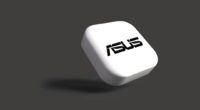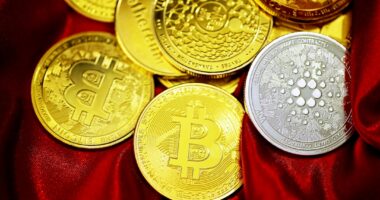A fascinating new development in the world of cryptocurrencies has emerged in recent years: Non-Fungible Tokens, or NFTs. With high-profile sales and celebrity endorsements making headlines, NFTs have significantly increased in popularity and attention. What are NFTs specifically, & how are they different from other cryptocurrencies? NFTs are distinct digital assets that are kept on a blockchain, which is a transparent and decentralized digital ledger. NFTs are indivisible and cannot be traded like-for-like with other cryptocurrencies, such as Bitcoin or Ethereum, which are fungible and can be exchanged one-to-one.
Key Takeaways
- NFTs are unique digital assets that use blockchain technology to verify ownership and authenticity.
- Blockchain technology is the backbone of NFTs, providing a secure and transparent way to track ownership and transactions.
- Top NFT marketplaces include OpenSea, Nifty Gateway, and SuperRare, where buyers and sellers can trade digital assets.
- NFT jobs are emerging in areas such as development, marketing, and art curation, offering new career opportunities in the industry.
- NFT artists like Beeple and Pak have made millions selling their digital art, showcasing the potential for NFTs in the art world.
Every NFT is unique and cannot be copied or substituted. Let’s look at an example to help you better grasp the idea of NFTs. Let’s say you own a digital piece of art that a well-known artist has produced. It is possible to tokenize this artwork and create an NFT. The NFT is kept on a blockchain & serves as a representation of the artwork’s ownership.
In other words, it is possible to confirm the artwork’s ownership and track the original creator’s transaction history back. On various NFT marketplaces, the NFT can then be purchased, sold, or traded. Understanding blockchain technology, which underpins NFTs, is crucial to understanding the concept of NFTs. Blockchain is a transparent, decentralized digital ledger that keeps track of transactions on numerous computers.
All transactions are recorded in an immutable and transparent record called a block, which is appended to a series of blocks that came before it. Blockchain technology is utilized in the context of NFTs to confirm ownership and guarantee the rarity and distinctiveness of the digital assets. An NFT is given a special token, or identifier, upon creation that is kept on the blockchain. This token can be transferred from one party to another and is used as ownership proof. The transparency and security that blockchain technology offers are two of the main advantages of using it in NFTs.
| Term | Definition |
|---|---|
| NFT | Non-Fungible Token – a unique digital asset that is verified on a blockchain |
| Blockchain | A decentralized digital ledger that records transactions in a secure and transparent manner |
| Ethereum | A blockchain platform that allows for the creation and exchange of NFTs |
| Smart Contract | A self-executing contract with the terms of the agreement between buyer and seller being directly written into lines of code |
| Gas | A fee paid in cryptocurrency to execute a transaction on the Ethereum blockchain |
| Wallet | A digital storage space for cryptocurrency and NFTs |
| Marketplace | An online platform where NFTs can be bought, sold, and traded |
| Metadata | Information about an NFT, such as its creator, date of creation, and ownership history |
It is very difficult to change or modify the transaction history of the blockchain because it is decentralized & dispersed across numerous computers. This provides a level of trust & security that is frequently absent from traditional digital assets by guaranteeing that the ownership of NFTs can be confirmed and authenticated. As NFTs become more & more popular, a number of online marketplaces have developed to make it easier to buy & sell digital assets. A platform for showcasing and trading NFTs is offered by these marketplaces to artists, collectors, & investors. Let’s examine some of the best NFT marketplaces in more detail & contrast their features & fees. 1.
One of the biggest and most well-known NFT marketplaces is OpenSea. It provides a large selection of digital assets, such as virtual real estate, artwork, & collectibles. Because OpenSea only charges a 2.5 percent transaction fee, both buyers and sellers can find it to be an affordable option. 2. Creating, purchasing, and selling NFTs is possible on the decentralized marketplace known as Rarible.
It uses the Ethereum blockchain and provides RARI, a special governance token. Each transaction on Rarible incurs a 2 percent fee, plus an extra 2 percent for creators. 3. SuperRare: Specialized in digital artwork, SuperRare is a curated marketplace. It highlights the rarity and distinctiveness of the assets while providing a small range of excellent NFTs. SuperRare levies a 3 percent transaction fee, plus an extra 10 percent for creators. 4.
Basketball highlights are the subject of digital collectibles available on NBA Top Shot, an officially licensed NFT marketplace. It has become very well-liked among collectors and sports enthusiasts. Every transaction at NBA Top Shot is subject to a 5 percent fee.
It’s important to take into account aspects like fees, platform reputation, community involvement, and user interface when purchasing and selling NFTs on these marketplaces. Also, in order to guarantee the legitimacy and value of the NFTs, careful investigation & due diligence must be performed prior to any transactions. The growth of NFTs has opened up a variety of career options in the NFT industry in addition to new investment opportunities. Professionals with NFT expertise are in greater demand from marketers to analysts to developers & artists.
Together with the abilities & credentials required for these positions, let’s examine some of the job opportunities in the NFT industry. 1. Digital artwork produced by NFT artists is capable of tokenization and subsequent creation of NFTs. They must possess both technical proficiency in creating digital art and a strong artistic vision. They ought to be knowledgeable about the NFT marketplace & blockchain technology as well. 2. NFT Developer: NFT developers are in charge of creating & managing the smart contracts and underlying infrastructure that enable NFTs.
Their knowledge of blockchain technology, smart contract development, & programming languages like Solidity must be profound. Three. Selling and promoting NFTs is the responsibility of NFT marketers. They must be well-versed in social media tactics, community involvement, and digital marketing techniques. They should also be conversant with the target market and the NFT marketplace. 4.
NFT Analyst: NFT analysts gather information, assess market patterns, & offer investors and collectors advice. Strong analytical abilities, familiarity with the NFT market, and the capacity to decipher trends & data are prerequisites. The job opportunities in the NFT industry are not limited to these few examples.
It’s likely that new positions and career paths will develop as the industry expands. Professionals must constantly learn and adjust to new technologies, maintain current knowledge of trends & developments, and cultivate a strong network within the NFT community in order to succeed in the industry. The art world has been one of the most notable areas of influence for NFTs.
Artists no longer need to go through conventional galleries and middlemen in order to display and sell their digital artwork thanks to NFTs. Let’s examine the incomes of some of the most prosperous NFT artists in more detail. 1. One of the most well-known NFT artists is Beeple, also known as Mike Winkelmann.
The artwork “Everydays: The First 5000 Days,” which he sold for an incredible $69 million at an auction, brought him a great deal of attention. One of the highest-earning musicians in the NFT market is Beeple thanks to his success. 2. Pak: An obscure online artist, Pak has amassed a sizable fan base within the NFT community. Their piece of art, “The Fungible Collection,” went for more than $17 million, making it one of the most costly NFT sales ever. In the NFT community, Pak is in high demand due to their distinct aesthetic and provocative artwork. 3.
Fewocious: A young artist who has gained recognition in the NFT community, Fewocious is also known as Victor Langlois. Self-expression and identity are major subjects in his artwork. Fewocious has sold multiple NFTs for high prices; one of his pieces went for more than $2 million. Together with financial benefits, these NFT artists’ success has put conventional art world values—such as ownership & value—under strain. NFTs have given artists a fresh approach to make money off of their creations & establish a direct connection with fans and collectors.
The gaming business is one more that has been greatly impacted by NFTs. With the ability to buy, sell, and exchange digital goods, NFTs have given in-game assets a new degree of ownership and value. Let’s examine how NFTs are transforming the video game industry and look at some titles that make use of them. 1. In the blockchain-based game Axie Infinity, users can gather, breed, and engage in combat with virtual animals known as Axies.
Every Axie is an NFT that can be exchanged, purchased, and sold on different online markets. Players of Axie Infinity can earn money in real life by participating in the game, which has seen tremendous growth in popularity. 2. Decentraland: Decentraland is a virtual reality marketplace where users can exchange virtual goods & land for cash. In Decentraland, each plot of land is an NFT on which users are free to construct & profit from their digital works.
Via the purchase and sale of virtual assets for real money, Decentraland has given rise to a new economy in the gaming industry. 3. Gods Unchained: This digital trading card game makes use of blockchain technology to guarantee the ownership & scarcity of in-game items. On different marketplaces, each Gods Unchained card is an NFT that can be purchased, sold, or traded. Due to the game’s popularity, it has drawn a sizable prize pool for prominent tournaments. With the use of NFTs, gamers can now truly own and control the items they have in-game. Also, it has given publishers and developers of video games new ways to interact with their player base and monetize their works.
It is imperative to stay abreast of the latest trends and developments in the NFT industry due to its rapidly evolving nature and rapid growth. For professionals, investors, and enthusiasts who want to stay informed, NFT newsletters are a great resource. Let’s examine some well-known NFT Newsletters and the advantages of receiving them via subscription. 1. Weekly updates on news, trends, and advancements in the NFT sector are provided by the newsletter NFT Now.
It offers information, analysis, & interviews with professionals in the field. Members get a carefully chosen collection of the most significant NFT news sent right to their inbox. 2. NFT Review: NFT Review is an extensive newsletter that covers a lot of NFT-related subjects, like gaming, art, collectibles, and more. It includes in-depth articles, industry insider interviews, and analyses. Access to unique content and insights from the NFT community is available to subscribers. 3.
NFT Insider: The most significant NFT news and developments are succinctly summarized in this daily newsletter. Market trends, new releases, and forthcoming events are just a few of the many subjects it covers. The most important NFT news is summarized for subscribers each day. Those who subscribe to NFT newsletters can learn about new artists and projects, keep up with trends, and make wise investment choices.
Selecting newsletters that offer accurate & trustworthy information from dependable sources is crucial. In the realm of sports, NFTs have also gained traction by offering players and teams new avenues for fan interaction & brand revenue. Let’s examine how NFTs are applied in the sports sector and look at some players and teams that have made use of them. 1. NBA Top Shot: As was already mentioned, NBA Top Shot is a digital collectible marketplace featuring basketball highlights that is officially licensed by NFT. In order to own a piece of their favorite players’ historic moments, fans can purchase, trade, and sell these NFTs.
Basketball enthusiasts & collectors have come to love NBA Top Shot. 2. FC Barcelona: Known worldwide as one of the most recognizable football teams, FC Barcelona has introduced “Barça Fan Tokens,” an NFT collection. With the help of these tokens, supporters may interact with the team, take part in surveys, and get access to special events and content. FC Barcelona has welcomed NFTs as a means of enhancing its fan base and generating additional income. 3.
Tom Brady: One of the most well-known and prosperous players in American football, Brady has also made his way into the NFT realm. With the help of digital collectibles, he introduced his own NFT platform, Autograph, which seeks to link brands, athletes, and celebrities with fans. Autograph provides a variety of NFTs, such as trading cards, artwork, & other items. Sports teams and athletes now have a new avenue to interact with their fans, produce memorable experiences, and generate revenue from their brands thanks to the usage of NFTs.
Also, it has made it possible for supporters to have more meaningful and engaged interactions with their favorite teams and athletes. NFTs are highly variable in terms of rarity and value, much like traditional collectibles. NFTs are highly sought after by investors & collectors because some of them have sold for astounding sums of money.
Let’s examine some of the rarest and priciest NFTs available on the market, along with the elements that add to their worth. 1. Ten thousand distinct 24×24 pixel art characters make up the collection known as CryptoPunks. Every CryptoPunk is an NFT with unique qualities and rarity. A single CryptoPunk sold for over $7.5 million, making some of the rarest ones fetch millions of dollars at auction. 2. 10,000 individually created, hand-drawn apes make up the Bored Ape Yacht Club collection. Every ape is a NFT with a variety of features and attachments. The rarest Bored Ape Yacht Club apes have brought in large sums of money at auction, with one ape reaching a price of over $2 million. 3.
Using the Art Blocks platform, artists can produce generative art pieces. Every project is made up of a collection of artificial intelligence-generated works of art, each of which is an NFT. A piece that sold for over $3 million was among the most well-known Art Blocks projects to sell for significant sums of money. Demand, artist reputation, rarity, and previous sales data are some of the factors that affect the value of NFT collectibles. The search for rare and distinctive NFTs with long-term value appreciation is a common one for investors and collectors.
Future developments in digital ownership are expected to be profound, as NFTs continue to gain traction and become widely accepted. The next phase of NFTs will be shaped in part by their integration into industries other than art and collectibles. We can expect to see NFTs being utilized in sectors such as gaming, music, real estate, and even virtual reality. In addition to giving producers and artists new chances, this expansion will allow people to properly own & profit from their digital assets.
Also, some of the present issues surrounding NFTs, like exorbitant transaction costs and environmental worries, will probably be resolved by developments in blockchain technology. We can expect more user-friendly platforms and marketplaces to emerge as the market develops, making it simpler for people to purchase, sell, and exchange NFTs. Also, partnerships between blockchain startups and established organizations are probably going to happen, which will strengthen the value proposition of NFTs and give them more legitimacy. In the end, NFTs have the ability to completely transform how we view & use digital assets in the future, ushering in a new era of digital ownership.
If you’re looking to dive deeper into the world of NFTs, you might find this article on NFT-Jobs.com quite interesting. It provides a comprehensive glossary of terms related to NFTs, helping you navigate the complex terminology associated with this emerging technology. Whether you’re a seasoned collector or just starting out, understanding these terms is crucial for making informed decisions in the NFT space. Check out the article here to expand your knowledge and stay ahead in the ever-evolving world of NFTs.
FAQs
What is an NFT?
An NFT (Non-Fungible Token) is a unique digital asset that is stored on a blockchain. It is used to represent ownership of a specific item, such as artwork, music, or collectibles.
What is a blockchain?
A blockchain is a decentralized digital ledger that records transactions in a secure and transparent manner. It is used to store and verify data, and is the underlying technology behind cryptocurrencies like Bitcoin and Ethereum.
What is a smart contract?
A smart contract is a self-executing contract that is stored on a blockchain. It is used to automate the process of verifying and enforcing the terms of an agreement between two parties.
What is gas?
Gas is a unit of measurement used to calculate the cost of executing a transaction on a blockchain. It is used to pay for the computational resources required to process the transaction.
What is minting?
Minting is the process of creating a new NFT and adding it to the blockchain. It involves generating a unique digital asset and assigning ownership to a specific address on the blockchain.
What is a wallet?
A wallet is a digital tool used to store and manage cryptocurrencies and other digital assets. It is used to send and receive transactions on the blockchain, and can be accessed using a private key.





